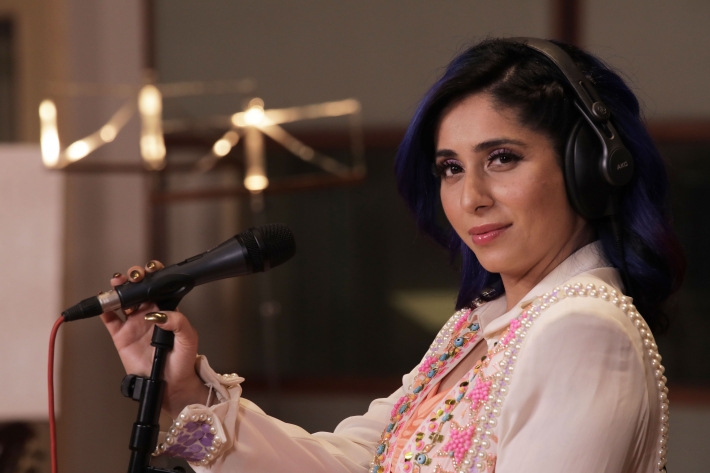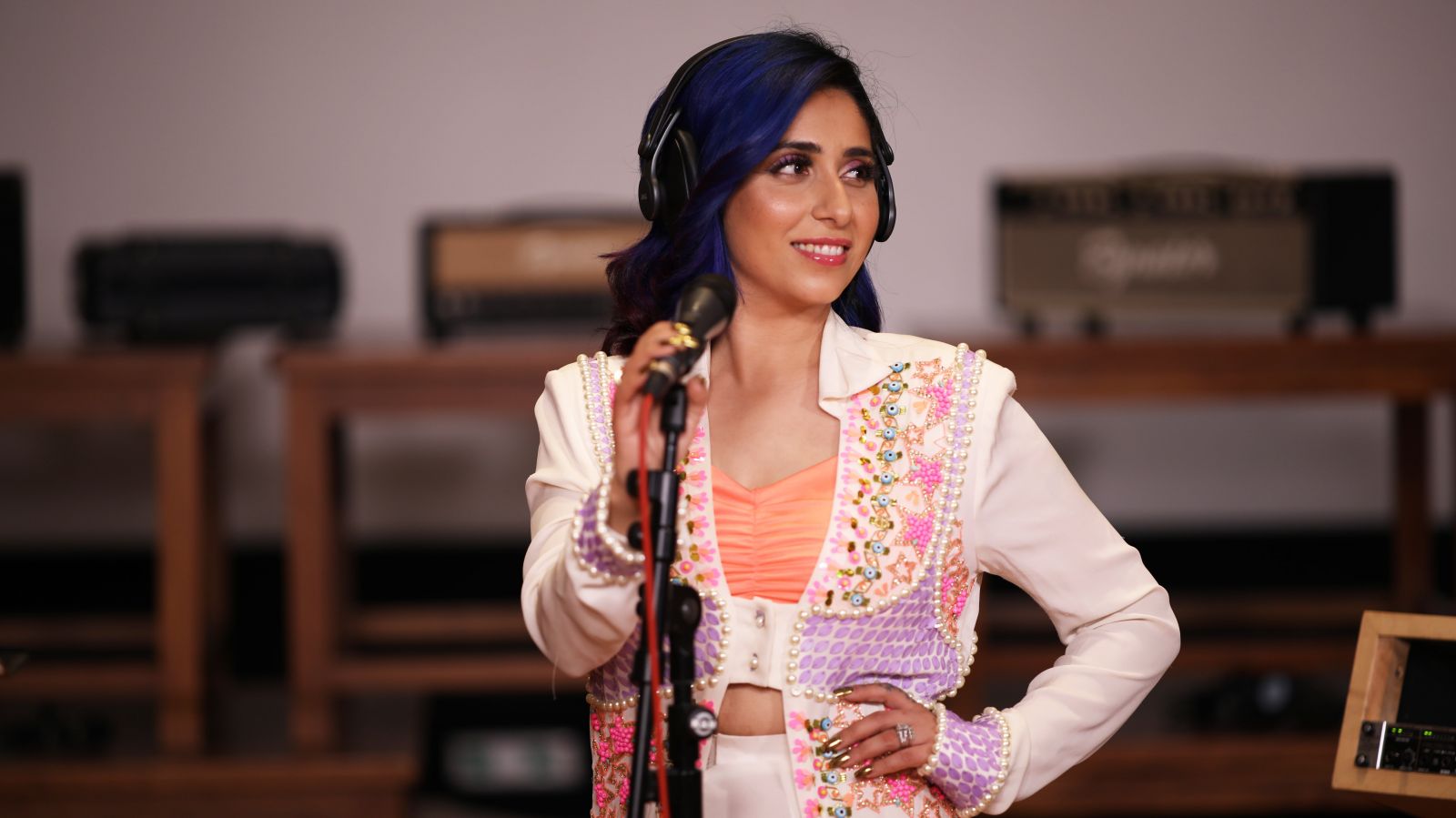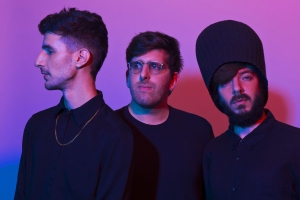
 Photo Courtesy: Neha Bhasin, Sameer Uddin
Photo Courtesy: Neha Bhasin, Sameer Uddin
Ever since music recording and production took the technological turn towards using computers and digitally stitching together songs, there has been an argument about whether the product is real or not. There are people who believe that there’s nothing wrong with spending the studio time and resources to achieve perfection and that the music that arrives out of it doesn’t have to be an indication of the artist’s live performance; the counter to it is that others believe that punch-ins and a bunch of studio trickery removes the truth from a piece of music. No matter which of the fence you’re on, the truth is that the old ways of recording have long since been almost completely replaced by the new. ‘Folk Tales Vol.1’, a folk album from singer Neha Bhasin and producer Sameer Uddin, seeks to rediscover the truth in not only putting out music but making it.
The idea of the album is relatively simple. It’s twelve Punjabi folk songs recorded live in one take with all the musicians sitting in the same room. The real difficulty is in the execution, of course; it’s really not easy to get perfect performances from an entire group of people at the same time. But what is most interesting is the difference it makes to the listening experience. The case a lot of people (and Sameer, who speaks about the project below) make is for honesty, and there’s an intangible element of the project’s first released track ‘Jutti Meri’ that echoes this. It’s not easy (or sensible) to explain how and why the track sounds as earthy and alive as it does, but there is something about the live interaction between the musicians and the blind confidence it takes just go for it and not think about anything but the current moment that contributes to it in a way a 'normal' (and highly edited) recording process just can’t. This emphasis on honesty and truth has been a centerpiece of Sameer’s intentions on this project; we spoke to him about how this came about and other things.
How did this project come to be? What ideas prompted you and Neha to start work on this?
We have been doing this folk appreciation and re-discovering project since 2014 as I remember. But because this is self-funded, the turnaround times are too long. We have to make the audio first, then find a video team, then make the video, then get into marketing and find a team for that… so it was getting exhausting to do this project as a set of singles. We needed to get this process off the ground faster. We decided that the type of folk we were doing has more resonance in an acoustic music context anyway, so we just thought of getting into the studio with a bunch of musician friends and do it straight up like the way it was done back in the day.
The whole album was done in a series of live takes. In a world when everything that comes out of a studio consists of heavy editing and many punch-ins and so on, what made you decide to use this system of recording?
Aesthetically, in a world where everything is just a giant Photoshop exercise with so much post-production and where everything is so perfect, we thought that having as little of a separation between the music and the audience was important. Until the 90s, this was actually the norm; you’d write, rehearse and do songs as a band live. That has been lost in today’s age. But it was a bit intimidating for sure. I have worked with computers for 20 years now; playing continuously is a bit daunting for someone who has worked a lot with punching in every 3 or 4 bars. Make no mistake, that approach works well too; I have been working with it for a long time and am a huge fan of post-produced music, electronica and so on, but we felt that there was definitely something to the audience feeling as close to the room with live musicians as possible. It helped that all the musicians are live players, so all we had to do was to try and get a stage experience in the studio. The video team also had to shoot and be on their toes as we played, so the whole process was much more difficult than we thought. However, a big factor in the process was Shantanu Hudlikar (Senior Engineer at Yash Raj Studios); he runs a full soundstage. Most studios in Mumbai are just built in buildings, so the spaces are just rooms that are fitted for recording. We not only needed a soundstage but a good ear for this thing, so he helped. Once everything came together, it ended up being smooth; we ended up doing 4 tracks per day, which was a big achievement for us.
Something pretty interesting that happened was that we had to actually use the EQ and music to filter sounds out of the main track instead of using it to enhance sounds. Since we had so many mics on in the room, there would be a lot of bleed from the instruments; for example a shrill tambourine would pop up on the vocal mic and a bunch of other mics. So it was interesting to be a bit counter-intuitive and take sounds out from the main source and let the bleed and ambience do the work instead of enhancing them as we normally would.

You’ve worked on many Bollywood projects and so on. How did this experience differ from the movie music you’ve done in the past?
I’ve been very blessed with the people I’ve worked with in Bollywood; I’ve pretty much been given free rein with my projects. But one of the big differences with this was that it’s self-funded so I had no one to answer to; everything was on me, which is fine. I didn’t have to honour a brief or anything like that. Also, if this was a film project and I had to have 10 musicians booked for 15 days, I would go bankrupt or finish any film’s budget, so I was lucky that the musicians on this were nice enough to help me out and see that this was an intention project and not focused on commerce.
What’s your connection with folk music and where did your listening journey with folk start?
My love for folk music came out when I started doing advertising. The thing with ads is that you get a wild and dynamic range of genres and briefs… One day you’ll get some operatic stuff, then drum n’ bass, then a brief for some hip-hop and so on, so I got exposed to a lot of folk music (as briefs) in that field. Well, before that we were all metal kids and listening to rock and once the indie music scene got big, we got into that. But in ads, we’d get briefs that’d ask for us to use a Rajasthani style, or Bengali folk or Punjabi or even world folk like Balkan-influenced styles and so on. And I cultivated a love for folk music that I still have to this day.
How did the songwriting process for this album go and are you planning to take this to a live show setting with Neha in the future?
Since this is such a live-centric project, we knew that if we got enough interest or listens, we could perform it live 1:1 to what is heard on the record. We do hope that the music gets some ears and is festival-worthy because it’s pure acoustic and pure folk; we haven’t bastardised the material. My approach to folk is quite delicate; we hope to keep the essence of the music but just spruce it up a little bit. My hope is that if any property or anyone who is interested can enable it, we can absolutely take these songs on the road and play them exactly as heard in studio. That’s also a credit to Shantanu who captured the live sound as realistically as he did. At the end of the say, we wanted a raw and true representation of the music. It didn’t need to be larger than life like the heavily edited music of today is, but at least it could be real.
Previous Article DIY Touring With Man.Goes Human DIY Touring With Man.Goes Human
|
Next Article Subhi Makes Pop Music Without Skimping On Meaning Subhi Makes Pop Music Without Skimping On Meaning
|
The Delhi rock band is trying to do things on their own
The Israeli multi-genre trio is in India for a four-city run





Leave a comment